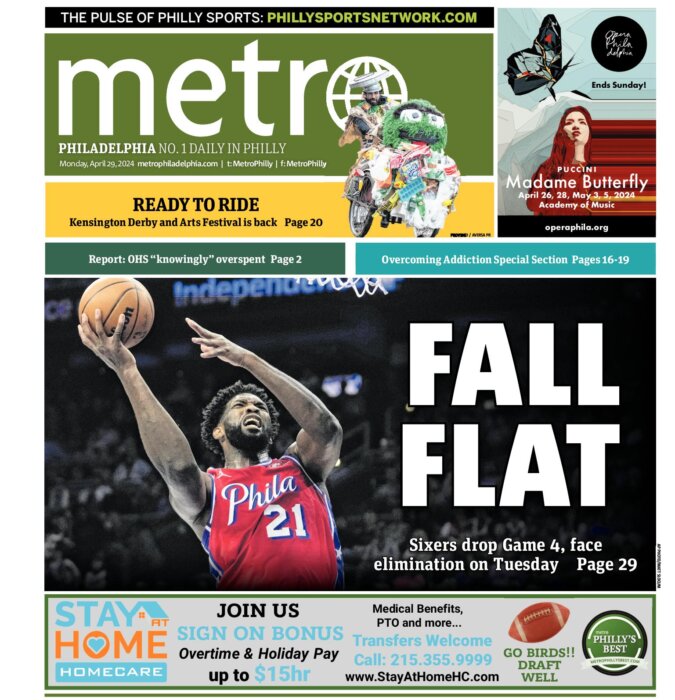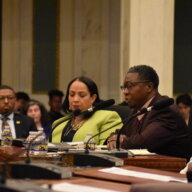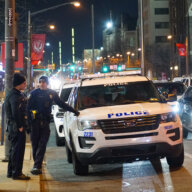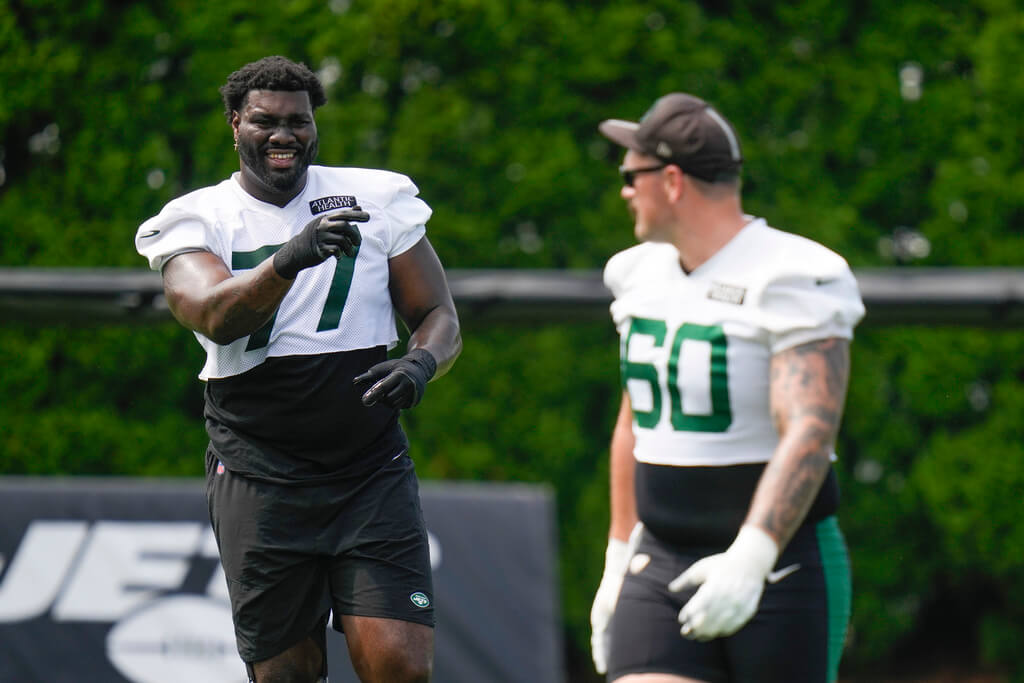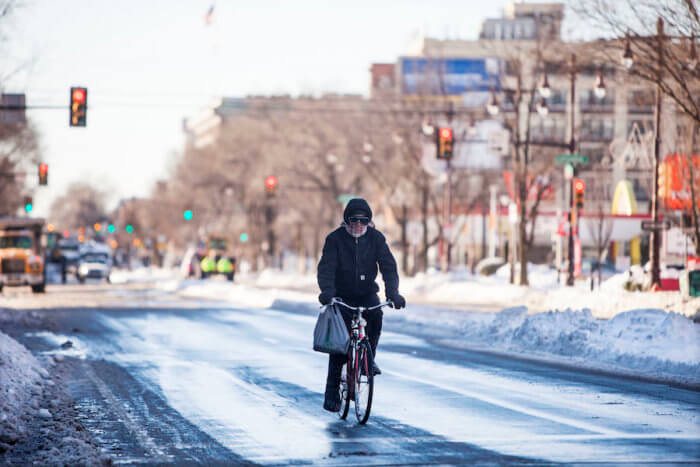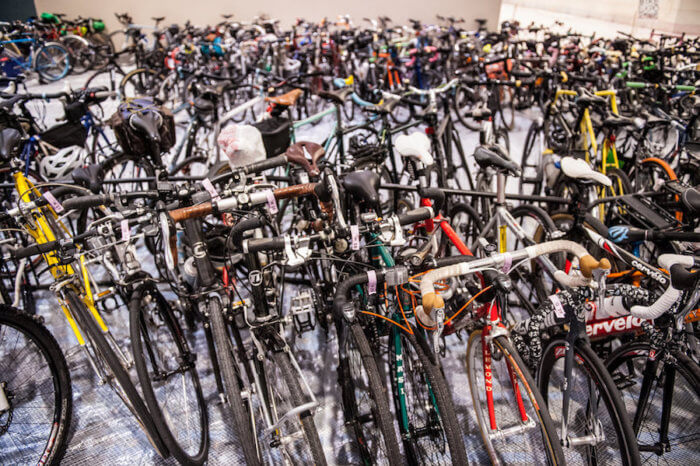It’s December. The temperature is dropping. And for cyclists, that means it’s time for winter biking tips.
If, like me, you commute by bicycle all year—saving money, being healthy, and getting to and from your destination without circling the block looking for parking (which actually makes up 30 percent of all traffic in cities)—there are a few things you should know about cutting through the cold wind, riding over the ice, and dealing with motor vehicle users who expected you to turn in your wheels for the winter. The easiest, and most commonsense thing to do is bundle up. According to Bicycle Coalition members who responded to a Twitter call for cold-weather advice during an 18-degree day last winter, Philly cyclists would do well to invest in abaklavathat fits under their helmet and covers up their ears. They’re available in most bike shops around Philadelphia, all of which can be found on BicycleCoalition.org. The other piece of clothing you won’t be able to live without: A good pair ofgloves or mittens. I personally put on two pairs of gloves because I find having all my fingers free allows me to better steer my bicycle than mittens—but to each her own. Long socks or legwarmers are pretty key for both windy days and wet ones. Most pants—denim and khaki alike—aren’t great for windy, cold days on their own. So, if you can get something under them, do that. Given the winter tends to be a bit icy, and Philly’s streets aren’t always clear the day after a storm, it’s also recommended youbike more cautiously.
“Take turns wider on sloppy road conditions, and watch out for places where the weight of cars has packed snow down into irregular ice lumps—those can be tricky,”notes People For Bikes. “Ride on clear pavement when you can and don’t be afraid to take the lane if the street is too narrow due to snow banks for safe passing.” And if you keep your bike outside overnight, or while you’re at work or school, chances are your brakes and tires will get icy in the weather. So, while riding,give yourself ample time to brake ahead of a red light or stop sign. You don’t want to be caught slipping through an intersection you didn’t mean to in South Philly, given drivers’ propensity to South Philly slide-on through. Report hazardous conditions, too.If you see unplowed bike lanes or other icy hazards on the street, let the city know about it. The city has the proper equipment to shovel snow from the streets and trails, but they’re not going to know it’s a problem unless you tell them about it. And while you’re at it, amounted video camerawouldn’t hurt your cause. This is the time of year, as most bicyclists are aware, that drivers aren’t used to seeing as many cyclists on the streets. So when they do, they don’t take the proper precautions they’re used to in the spring and summer. But in the winter—just as in the spring, summer, and fall—drivers are required to give you four feet of space when passing you in traffic. They cannot harass you. And if they don’t follow the rules, notes Philly bike lawyer Joe Piscitello, and you want to press charges, it’s best you have that footage on camera. Piscitello also recommends that, after filing a police report, you bring your footage to a lawyer rather than the police to speed up the process. And while you’re at it, the best way to avoid harsh winter wind on your toes and harsh rock salt on your shoes is to tie your feet up with plastic bags.It’s not the most stylish look, but it gets the job done. Randy Lobassois communications manager at the Bicycle Coalition of Greater Phialdelphia.
Winter biking: advice for cycling with Jack Frost
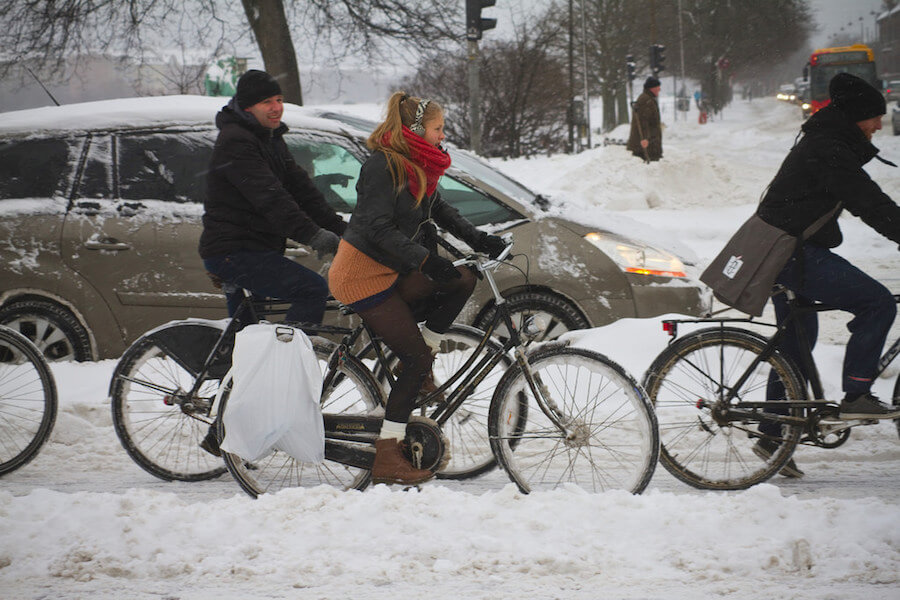
Creative Commons
